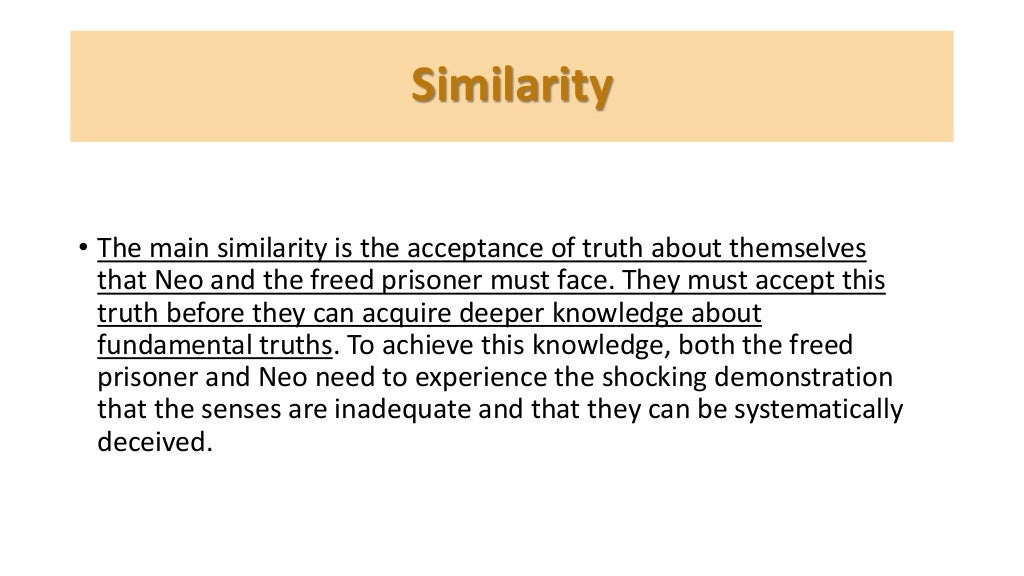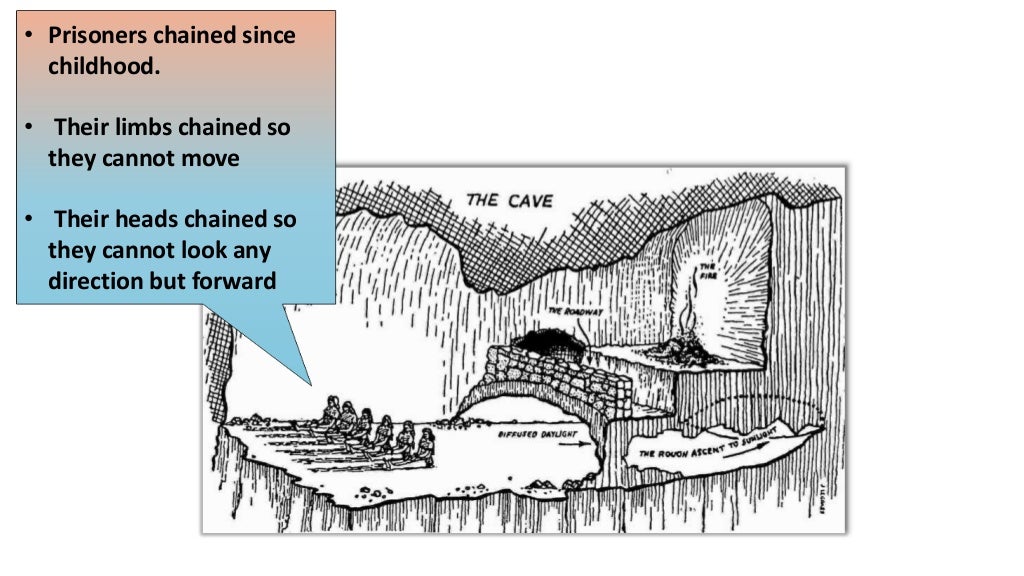
Through the exposure to new ideas and concepts, a person accustomed to the structure created through societal institutions will soon realize that there is more to life than what they previously understood. In turn, these societal institutions reinforce oppression and allow the status quo to continue without a critical examination of its very nature.

Instead, it emphasizes presenting facts in such a manner that prevents individuals from questioning the nature of reality and the way life works. Societal institutions such as the educational system and the media at their core do not value critical thinking and critical analysis. Plato is correct in saying that educated people are treated as outcasts by other individuals who lack education or the initiative to pursue higher knowledge and wisdom levels. Once they are at the outside world and accustomed to numerous facets of life, the former prisoner will begin to realize that the reality they experienced in the cave is false. The fact that the sunlight burns the eyes of the former prisoner may also be an illusion to the fact that newfound knowledge at times can be overwhelming for an individual and result in their initial rejection of new knowledge. Once outside of the cave, the former prisoner is also described to have their eyes blinded by the light from the sun. The fact that the individual has to climb from the bottom part of the cave to higher ground is akin to the fact that the pursuit of knowledge often places an individual at a higher level of consciousness and increases their level of clarity regarding society and the world in general. Plato next discusses what might happen when the former prisoner decides to leave the cave for the first time. As such, the prisoners’ reality is only the reflection of the shadows and the echoes of their voices and other sounds. This would result in the prisoners to talk to the shadows even though the shadows are not real. Additionally, the echo inherent to the cave results in the sounds of individuals or objects either passing the cave or inside the cave to be reflected. The only form of visible light in the cave is a fire that reflects the shadows from objects and individuals passing by onto the cave walls. The cave is also mentioned as devoid of all forms of visible light. Plato begins his discussion in The Allegory of the Cave by describing the condition of human ignorance as akin to prisoners living in a cave deep underground with the inability to move freely within the cave. The Allegory of the Cave illustrates the human situation as a parable about ignorance and learning. Plato first explored how philosophy promotes freedom and intellectual curiosity in The Allegory of the Cave, a section in his philosophical treatise The Republic. An example of a philosopher who explored these ideas was Plato, a Greek philosopher who is largely considered one of the founding figures in Western philosophical thought. The merits of various philosophical views are debated intensely among scholars, with some ideas accepted, and others ultimately becoming discredited as society changes, and new facts about life are discovered.

In their analysis of these questions, philosophers have developed numerous different theories that have been applied over time.

#Allegory of the cave analysis free#
Throughout human history, philosophers have attempted to determine the best way to promote intellectual freedom and allow individuals to break free from intellectual oppression and increase their enlightenment levels.


 0 kommentar(er)
0 kommentar(er)
